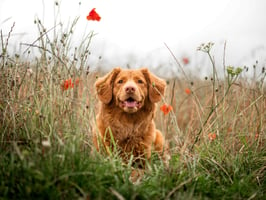Do you have a dog that loves to pull on the leash? You’re not alone. Many pet owners have the same...
How to Stop a Dog Pulling on the Leash: Everything You Need to Know
When your dog pulls on the leash, it can be a distressing experience for both you and your pooch. Fortunately, there are many techniques you can use to teach your dog to walk politely on the leash. In this article, we cover everything you need to know to stop your dog from pulling on the leash - from the best tools and techniques to use, to how to prevent your pup from developing bad habits.
The Best Tools and Techniques to Use
The first step to stopping your pup from pulling on the leash is to choose the right tools and techniques. There are a few different approaches you can take, and the most popular methods include:
- Positive reinforcement: Positive reinforcement is an effective way to teach your dog to stop pulling on the leash. This method involves rewarding your pup with treats and praise when they walk on the leash without pulling.
- Head collar: A head collar is a type of collar that fits around your pup’s muzzle and head. When your pup pulls on the leash, the head collar applies gentle pressure, which can help to discourage them from pulling.
- Harness: A harness is a great tool to use if your pup is a strong puller. A harness distributes the pressure around your pup’s body, which can help to reduce the strain on their neck.
- Leash training: Leash training is an important skill for all dogs to learn. This involves teaching your pup to walk in a calm and controlled manner on the leash.
It’s important to note that the best approach for your pup may depend on their size, age, and temperament. It’s also important to remember that training your pup to stop pulling on the leash can take some time, so be patient and consistent with your pup.
How to Train Your Dog to Stop Pulling on the Leash
Once you’ve chosen the right tools and techniques, it’s time to start training your pup. Here are some tips to help you get started:
- Start indoors: Before you take your pup outside, it’s best to start training indoors. This will help your pup to get used to the feel of the leash and collar and give them the chance to practice walking in a controlled manner.
- Reward good behaviour: As mentioned earlier, positive reinforcement is an effective way to teach your pup to stop pulling on the leash. Whenever your pup walks without pulling, be sure to reward them with treats and praise.
- Be consistent: Consistency is key when it comes to training your pup. Make sure you’re consistent with the commands you use and the rewards you give. This will help your pup to learn more quickly.
- Stay calm: When your pup starts to pull on the leash, it’s important to stay calm. Don’t shout or yank on the leash as this can make the problem worse. Instead, try to remain calm and focus on rewarding your pup for good behaviour.
With the right tools and techniques, and a bit of patience and consistency, you can train your pup to stop pulling on the leash.
How to Prevent Your Dog from Developing Bad Habits
Once your pup has learnt to walk without pulling, it’s important to prevent them from developing bad habits. Here are some tips to help you do this:
- Keep walks short: Long walks can be tiring for your pup, so it’s best to keep them short. This will help to prevent your pup from getting too tired and starting to pull on the leash.
- Keep the leash loose: It’s important to keep the leash loose when your pup is walking. This will help to ensure that your pup isn’t pulling on the leash and will make walks more enjoyable for both of you.
- Avoid distractions: Distractions can be a big cause of leash pulling, so it’s best to avoid them. If you know there are certain areas or situations that distract your pup, it’s best to avoid them until your pup is able to walk calmly on the leash.
- Be prepared: Make sure you’re prepared for each walk. Bring treats, toys, and other distractions to help keep your pup focused and prevent them from pulling on the leash.
By following these tips, you can help to ensure that your pup learns to walk without pulling on the leash.
Conclusion
Leash pulling can be a distressing experience for both you and your pup. Fortunately, there are many techniques you can use to teach your pup to walk politely on the leash. The best approach for your pup may depend on their size, age, and temperament, but positive reinforcement, head collars, harnesses, and leash training are all popular methods. With the right tools and techniques, and a bit of patience and consistency, you can train your pup to stop pulling on the leash. It’s also important to take steps to prevent your pup from developing bad habits, such as keeping walks short, avoiding distractions, and being prepared for each walk. By following these tips, you can help to ensure that your pup learns to walk without pulling on the leash.



